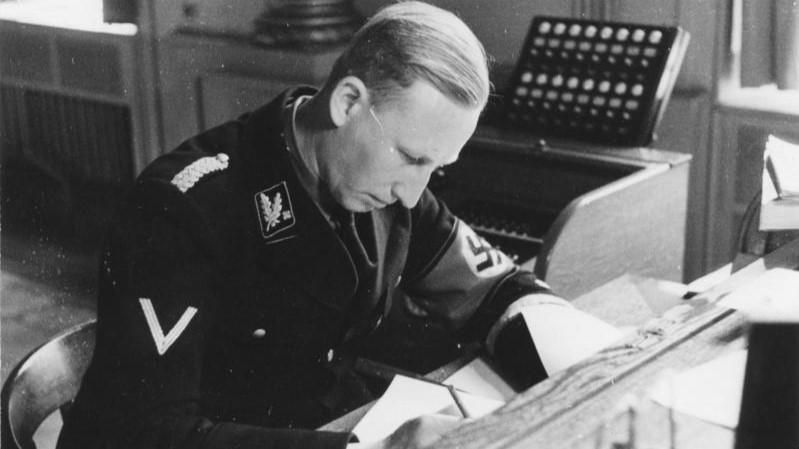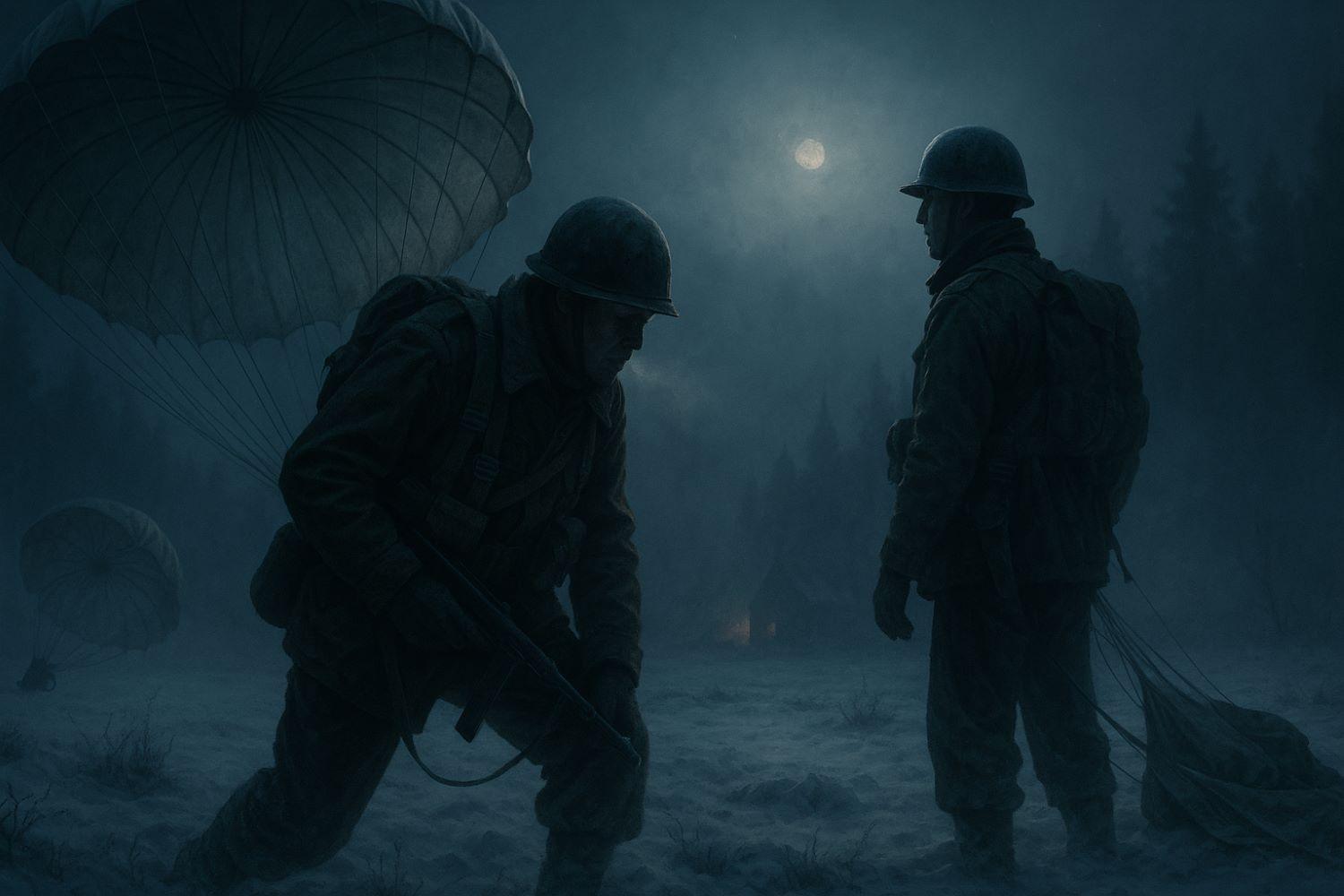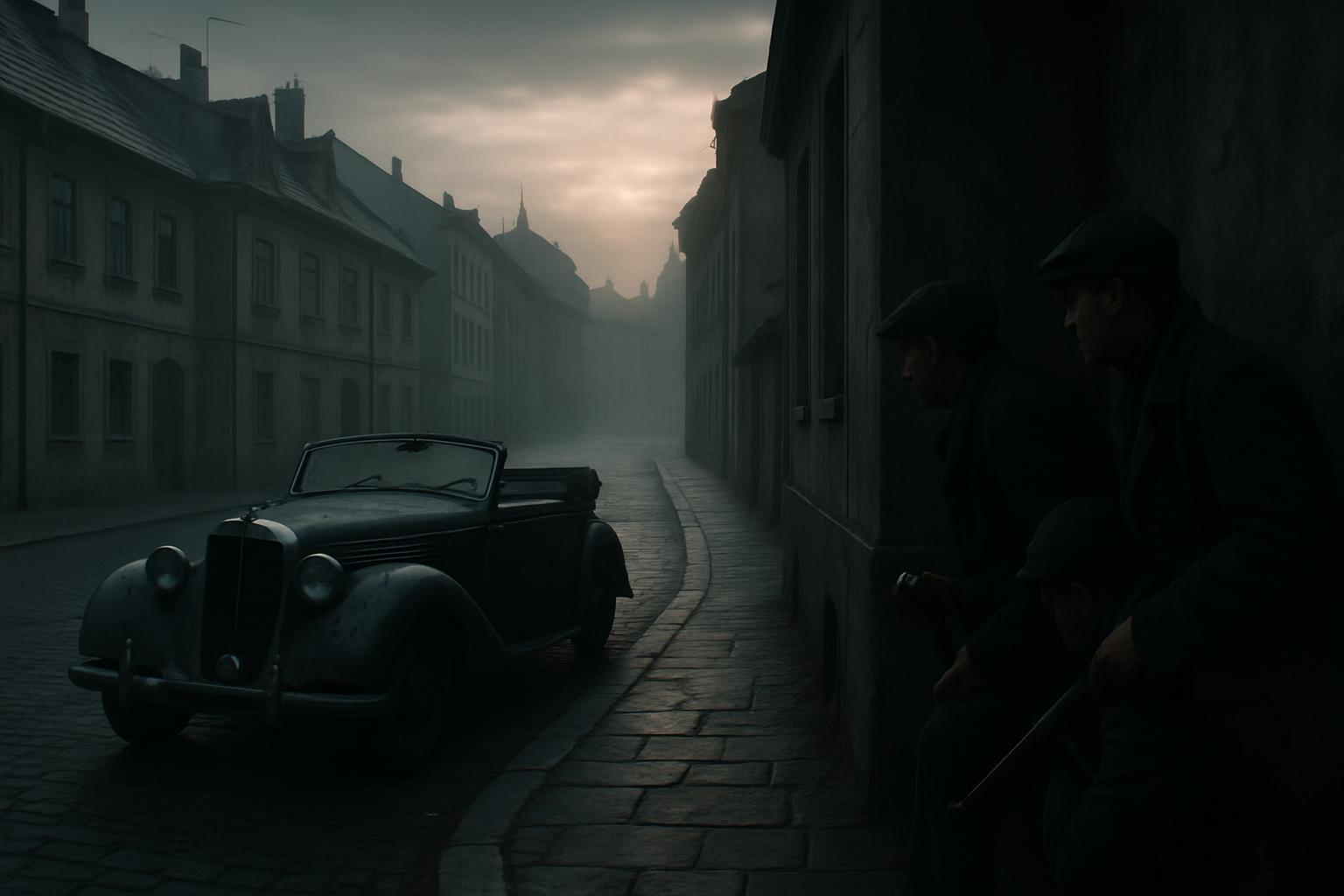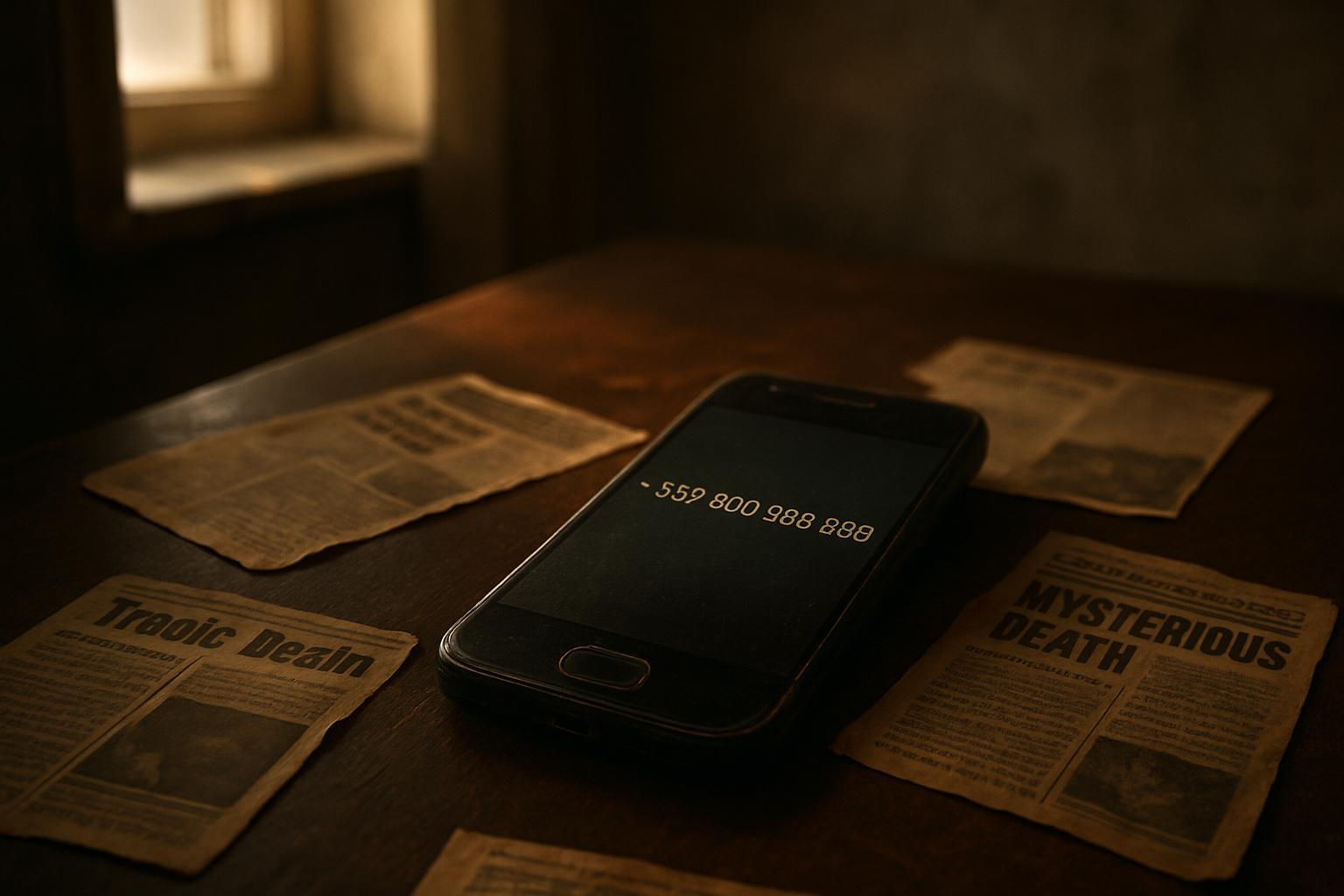In the shadowy days of World War II, few acts of resistance against Nazi Germany struck as deeply as the assassination of Reinhard Heydrich. This daring mission, carried out by Czech and Slovak operatives, not only removed one of the Third Reich’s most feared leaders but unleashed brutal reprisals that shocked the world. The story of Heydrich’s assassination is one of courage, sacrifice, and the far-reaching consequences of standing up to tyranny.
Reinhard Heydrich: The Architect of Terror
To understand the significance of the operation, you need to know who Reinhard Heydrich was. Born in 1904, Heydrich quickly rose through the Nazi ranks, becoming one of Hitler’s most trusted men. He was a chief architect of the Holocaust, a founder of the Gestapo, and head of the SS’s intelligence service. His cold logic and utter ruthlessness earned him the nickname “The Butcher of Prague.”

After the occupation of Czechoslovakia in 1939, the Nazis installed Heydrich as Acting Reich Protector of Bohemia and Moravia. He imposed martial law almost immediately, ordering mass arrests and executions to crush resistance. Many Czechs and Slovaks lived in fear of his policies, as Heydrich used intimidation, deception, and outright violence to tighten his grip on the region.
By 1942, Heydrich’s control over Czechoslovakia was near absolute. Yet, his very presence galvanized opposition abroad, especially among the exiled Czechoslovak government, which operated from London under President Edvard Beneš.
The Birth of Operation Anthropoid
In London, Czechoslovak leaders debated how to fight back against the Nazi occupation. With the support of the British Special Operations Executive (SOE), they hatched a plan to assassinate a high-profile Nazi in Prague. The clear target was Reinhard Heydrich.
They named the plan Operation Anthropoid. Two volunteers—Jan Kubiš and Jozef Gabčík—were chosen for the mission. Both had fled Czechoslovakia after the Nazi invasion and were well-trained for sabotage, parachuting, and guerrilla tactics. They underwent intensive preparation in Britain, learning about explosives, coded communication, and survival skills. As winter crept in, time ran short; Heydrich was due to return to Berlin in the summer, so the operatives needed to act fast.
Many considered the mission a suicide assignment. The risk was enormous. Still, Kubiš and Gabčík agreed, inspired by a sense of duty to their occupied country. Their journey back into Czechoslovakia began on a freezing night in December 1941.
Journey Behind Enemy Lines
On December 28, 1941, a British Halifax bomber carried the men toward their homeland. Their drop zone was in central Czechoslovakia, far from Prague. A navigational error forced them miles off course, but the team regrouped and connected with members of the local resistance.
The occupied country was a dangerous place for anyone suspected of anti-German activities. Gestapo agents and informants were everywhere. Despite this, the men traveled the countryside, moving between safe houses and avoiding patrols. They gathered intelligence, studied Heydrich’s routines, and assembled their weapons.
During their wait, both Kubiš and Gabčík suffered near misses. One contact was arrested. Supplies ran low. Communication with London was always at risk of interception. Yet, every day, the resistance grew more certain that action had to come soon.

Choosing the Time and Place
Heydrich traveled daily between his suburban residence and Prague Castle. His car, a green Mercedes convertible, drove slowly through the city’s outskirts, protected but not armored. His arrogance led him to disregard strict security, thinking nobody would dare to attack such a powerful Nazi leader.
For months, Kubiš and Gabčík watched, learning every detail of his commute. Timing was crucial. The operatives decided to strike on a sharp, blind curve in the Prague suburb of Libeň. Traffic there would force the car to slow down, offering a brief window to attack.
The men recruited local resistance fighters, including Josef Valčík, to serve as lookout. Final preparations were made on May 26, 1942. The next morning, the team took their positions, their nerves stretched but their resolve clear.
The Attack at Libeň: Execution of the Plan
On May 27, 1942, Heydrich and his driver set off, heading along the route as usual. As their Mercedes slowed for the curve, Jozef Gabčík stepped into the street, submachine gun in hand. He aimed and squeezed the trigger.
But in a twist of fate, the gun jammed. Despite the malfunction, the attack was not over. As Heydrich’s car skidded to a halt, Kubiš acted fast, throwing an anti-tank grenade at the vehicle. The device exploded against the car, blasting metal and horsehair into Heydrich’s body.
The impact sent shrapnel flying, wounding both Heydrich and Kubiš, who was thrown to the ground by the blast. Despite his injuries, Heydrich drew his pistol and attempted to fight his attackers. Kubiš and Gabčík escaped the scene on bicycles, blending into the city as chaos erupted around the attack site.
The Immediate Aftermath
Heydrich was gravely wounded but remained conscious. He was rushed to Bulovka Hospital, where German doctors operated, removing splinters and shrapnel. For several days, it seemed he might recover. But infection set in, and on June 4, 1942, Heydrich died from septicemia, one of the highest-ranking Nazi officials killed by resistance fighters during the war.
News of his death sent shockwaves through the Nazi high command. Hitler himself was furious, seeing the assassination as a personal insult and a severe threat to Nazi control in Eastern Europe.
Nazi Retaliation: The Lidice and Ležáky Massacres
After Heydrich’s death, Nazi authorities launched a brutal search for the assassins. Himmler and Hitler demanded swift, outrageous retribution. The terror began immediately.
- More than 13,000 people were arrested in the following days.
- Torture, summary executions, and the burning of homes became common.
- Resistance fighters and their families faced instant death if discovered.
The worst atrocities occurred in Lidice, a small village 20 kilometers from Prague. On June 10, 1942, German troops surrounded the village, claiming they had evidence that Lidice’s residents helped the operatives. Nazi soldiers executed all 173 adult men. Most women were deported to Ravensbrück concentration camp. Children were either handed over to German families or sent to extermination camps. Every building was destroyed. The name Lidice became a symbol of Nazi cruelty worldwide.
A similar fate met another village, Ležáky, suspected of supporting the saboteurs. Dozens more perished. The destruction of Lidice and Ležáky shocked the international community, fueling support for the Allied war effort and hardening global resolve against the Nazis.
The Manhunt: The Final Stand in Prague
In the days after the assassination, Kubiš and Gabčík hid in Prague, taking shelter in safe houses and churches. They eventually found refuge in the crypt of Saints Cyril and Methodius Cathedral. Nazi forces, however, were closing in.
A betrayal by a fellow paratrooper under Gestapo torture led them to the hiding spot. On June 18, 1942, over 700 German troops surrounded the church. After an hours-long firefight and siege, the remaining resistance fighters chose death over capture. Kubiš was fatally wounded in the shootout, while Gabčík and two others committed suicide to avoid falling into Nazi hands.
The defiant last stand at the cathedral entered legend. The sacrifice of the paratroopers inspired the Czech spirit of resistance, even as the Nazi reign of terror raged on.
Operation Anthropoid’s Legacy
The assassination of Reinhard Heydrich was one of only a handful of successful attacks on senior Nazi officials during World War II. It had far-reaching consequences, both tragic and triumphant.
Politically, the act proved to the world that even at the height of Nazi power, meaningful resistance was possible. The mission’s success:
- Forced Allied governments to publicly commit to the postwar independence of Czechoslovakia, reversing the Munich Agreement.
- Inspired similar resistance actions in other occupied countries.
- Exposed the vulnerability and brutality of the Nazi regime.
But the price was enormous. The Czech resistance network was almost completely destroyed by the Gestapo. Thousands of innocent civilians were murdered, deported, or displaced in the reprisals that followed. The names Lidice and Ležáky became reminders of the high human cost of freedom.
Global Reaction and Enduring Memory
Worldwide, news of Heydrich’s assassination and the destruction of Lidice sparked anger and support for the Allied cause. Towns in Mexico, Panama, the United States, and elsewhere renamed themselves Lidice to honor the fallen villagers. Memorials sprung up in many countries. The Allies responded by accelerating plans to defeat Nazi Germany, using Nazi atrocities as evidence of the regime’s evil. Czechoslovak resistance efforts won sympathy and respect across the globe.
Today, the assassination is a symbol of bravery in the face of tyranny. Each year, people in the Czech Republic remember Operation Anthropoid, paying tribute to Kubiš, Gabčík, and all those who fought and died for their country’s freedom.
Heroes Remembered: The Fate of the Men Involved
The names Jan Kubiš and Jozef Gabčík live on in Czech and Slovak history. Statues and memorials mark their courage both in Prague and abroad. Other members of the resistance received honors posthumously, their once-clandestine deeds told and retold for new generations.
For years, the families of those involved lived under constant threat. Many who helped the operatives—directly or indirectly—paid with their lives. But their sacrifices, and that of the paratroopers, played a crucial role in shaping the outcome of World War II in Czechoslovakia.
The memory of Lidice and Ležáky continues to teach sobering lessons about the cost of resistance and the brutality of occupation. Museums, plaques, and reconstructed sites ensure these stories are not forgotten.
Operation Anthropoid in Film and Literature
The dramatic events of May and June 1942 have inspired many works of art. The first film, “Hangmen Also Die!” appeared in 1943, even as the war raged on. Since then, several movies have portrayed the assassination and its aftermath, including “Operation Daybreak” (1975) and “Anthropoid” (2016), starring Cillian Murphy and Jamie Dornan.
Books, documentaries, and exhibitions continue to spread the story worldwide. These retellings aim to capture not only the heroism and drama of Operation Anthropoid but also its terrible cost. For many, these works are a way of honoring those who stood up to one of history’s darkest regimes.
Why the Story Still Matters
The assassination of Reinhard Heydrich stands out as a turning point in the history of World War II resistance. It was proof that individuals with determination and courage can strike against even the most powerful oppressors. The mission forced the world to see both the hope and horror of those years—the bravery of the few, the suffering of the many.
As you consider the sacrifices of those involved, ask yourself what freedoms are worth defending. The tale of Operation Anthropoid reminds us that great courage sometimes asks a terrible price, yet its legacy can help light the way for generations to come.
Today, memorials, commemorations, and memories keep the heroes and victims of Operation Anthropoid alive in the minds and hearts of people around the world. Their story continues to inspire those who believe in opposing injustice, no matter how daunting the odds.



